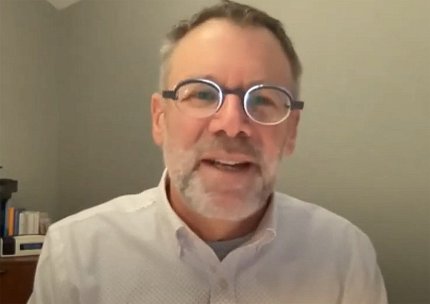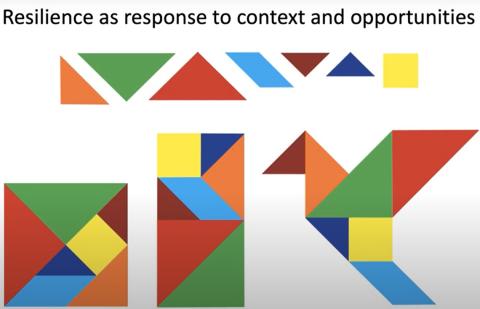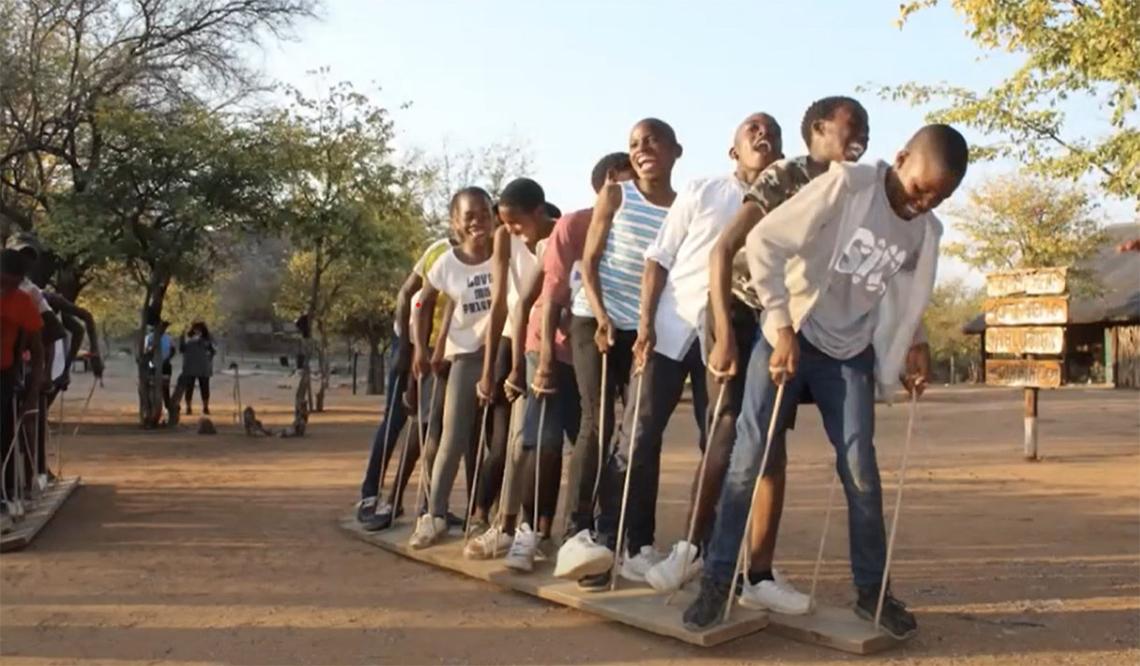The Road to Resilience
Ungar Uncovers How Kids Find Strength in Stressed Environments

In many ways, the Covid pandemic has tested the resilience of people of all ages, everywhere. Its many stressors have taken a toll on our mental health and placed a disproportionate burden on the most vulnerable populations. Whether in a pandemic or other challenging circumstance, research shows there are strategies to help even the most vulnerable survive and thrive in the face of adversity.
Creating the conditions for resilience involves all kinds of positive forces interacting, said Dr. Michael Ungar, director, Resilience Research Centre and Canada research chair in child, family and community resilience at Dalhousie University in Halifax, Canada.
Speaking at a recent NIMH Director’s Innovation Speaker Series lecture, Ungar discussed efforts to bolster resilience in high-risk environments, especially among children.
Ungar told stories of resilience based on his extensive clinical research and from discussions with colleagues from around the world. While working with a researcher in Japan, for example, he learned that after the 2011 tsunami, an NGO (nongovernmental organization) built an after-school tutoring center, creating a social space and sense of much-needed normalcy and optimism for children recovering from loss.
“They actually created the structure of putting kids back into educational pathways that are predictive of a positive outcome,” said Ungar. In another setting or culture, other kids may respond better to different types of programs. The key is finding the right outlets that kids would find most protective to them.

In some societies, promoting resilience requires a mindset change. When university professors in Afghanistan deliberated over how to encourage more women to attend college, they first had to overcome the barriers of a patriarchal society. When women began enrolling at one university, an important resource was missing there: women’s bathrooms.
“In part, [resilience] is gut and perseverance,” said Ungar. “But it’s also whether or not somebody builds you a toilet.”
In high-risk environments, access to resources—adequate housing, transportation, scholarships, training—can boost resilience, helping people transition to the next phase in their lives. In the face of significant adversity, said Ungar, resilience is the ability “to navigate to all the psychological, social, cultural and physical resources that sustain our well-being, and our capacity to negotiate, to ask for those resources to be given to us, in culturally meaningful ways.”

Ungar identified 7 resilience-promoting processes, based on patterns he observed in an 11-country study of kids in high-risk environments. The young people who excelled, said Ungar, had access to basic necessities—shelter, food, clothing, education—and could nurture relationships; negotiate a positive identity for themselves; connect culturally; and experience efficacy, a sense of belonging and a sense of social justice.
“Resilience looks different for different populations in different contexts for different levels of stress,” Ungar said. Whether a refugee fleeing persecution, a person coping with terminal illness, or an average kid struggling with parents’ unrealistic expectations, each person pieces together a combination of these resilience factors to cope as best they can.
Unfortunately, research shows many high-risk kids may not be getting the services they need. One Canadian study that was replicated in four other countries revealed that kids from the most dangerous, threatening environments were either not getting services or not benefiting from the services provided. But when children had a positive experience with a therapist or other helpful service, “that was a vehicle for them to find those [resilience-building] factors,” he said, to develop that sense of belonging and cohesion. “And then, they would change their behaviors.”

In Botswana, Ungar’s colleague Dr. Masego Katisi developed a successful resilience-building program to help children whose parents had died of HIV/AIDS. The children were paired with paraprofessionals in their communities who went on to lead them in team-building and trauma therapy activities at a 2-week camp, then continued to meet with the kids back home.
“By making resources available and accessible to very vulnerable children in a low-resource context,” Ungar said, “she’s making it possible for these children to find the supports they need in culturally relevant ways.”

Building resilience is a dynamic process. Ungar advised asking which program, for which people, at what risk profile will produce the desired outcome.
“I think what we do as clinicians is try and elevate people…try to get them to find socially more desirable ways of expressing or finding connections,” he said. “That could be an online community, a gaming community, maybe a volunteer activity or a faith community.”
The Covid pandemic exposed people of all ages to extreme stress and anxiety. A large U.S. study by CIGNA found that the global health crisis affected older adolescents and young adults the most from a mental health standpoint.
“They weren’t able to socialize,” explained Ungar, “and…some of the social justice issues, such as the Black Lives Matter and #MeToo movements, were worrying them a great deal.”
And yet research also showed many kids were thriving, safe at home, having even the partial attention of teleworking parents without the overscheduling, bullying and other pressures in normal times.
“I think the onus now,” Ungar concluded, “is to allow the science to work with children who are indigenous and from other ethno-racial groups whose experiences are much more marginalized—and explore [these] children’s experiences during the pandemic—and let the complexity of those stories really shine.”
